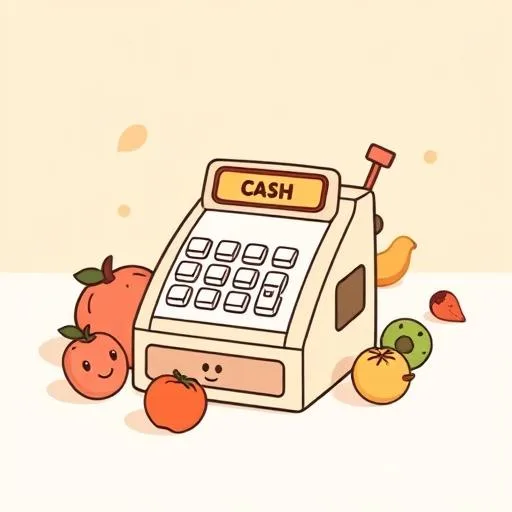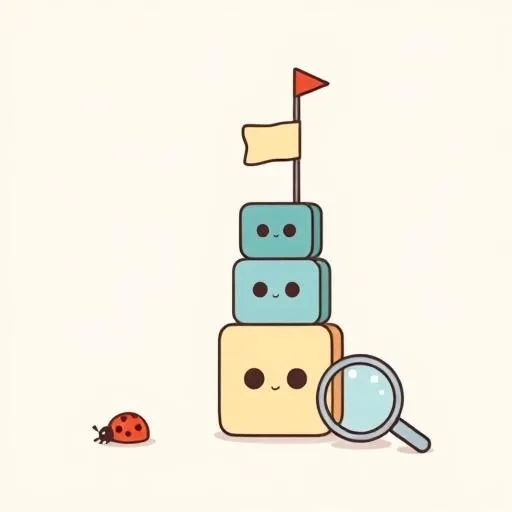
Remember watching your little one become utterly absorbed in building a single elaborate Lego tower while ignoring the rest of the bin? That laser focus on one joyful pursuit—dinosaurs before dinner, sidewalk chalk masterpieces after school—holds a quiet clue about how real learning takes root. Funny how the biggest tech debates mirror our kitchen-table parenting puzzles. What if we judged tools not by their flash, but by how they help curiosity bloom?
Why General Isn’t Always Greater (Even for Tools)

Reading about those industry-specific AI tools claiming real results—retailers spotting trends faster, finance teams catching errors quicker—I couldn’t help but chuckle. It’s like expecting one toy box to magically solve every playtime challenge. When my daughter’s stuffed animals ‘ran a grocery store’ last week, she needed just three things: a pretend cash register, fruit drawings, and her serious ‘manager’ voice. Anything extra? Distracting. Turns out AI works the same way.
Those eye-catching reports show specialized tools thriving where generic ones stumble. When MIT found fewer than 5% of broad AI experiments actually moved the needle for businesses, it wasn’t about the tech failing—it was about trying to boil the ocean. Imagine asking a 7-year-old to learn all instruments at once instead of just plinking piano keys that make them grin. Success comes from matching tools to exact moments, like spotting how many ladybugs live under your maple tree instead of counting every insect in the park.
What if we applied that same wisdom at home? Instead of wrestling with endless ‘educational apps,’ what if we let curiosity guide us? When my kitchen counter became a ‘construction site’ for pancake stacks, we didn’t need a fancy tool—we needed syrup, bananas, and permission to get messy. Sometimes the best ‘technology’ is just space to wonder.
The Magic in Small Moments

Here’s where it gets delicious: those industry reports mention vertical AI delivering results in weeks because they solve one clear problem. A financial firm slashed false alarms by 77%? That’s not magic—it’s focus. Now picture your kid mastering balancing blocks on the playground. They didn’t start by building skyscrapers; they began with two blocks, then three, celebrating each tiny victory with ‘Look what I did!’
That’s the heartbeat I see in these findings. When tools stop pretending to do everything and instead serve one slice of life perfectly—helping doctors note patient details, or guiding retail staff to restock shelves—they become invisible helpers. Like the way a good magnifying glass disappears when your child’s examining dandelion fluff. You don’t notice the tool; you notice the wonder.
Last Tuesday’s park adventure proved it. No apps needed—just sidewalk chalk and the question: How many colors live in this cloud? Suddenly the sky wasn’t just gray; it was blue-gray, purple-gray, almost-pink. That’s ROI I understand: joy that compounds.
Growing Roots, Not Just Results

Building on that focus, the real gap in these reports isn’t about numbers—it’s about the human stuff. One venture team notes that top performers succeed through ‘clear use cases and measurable outcomes.’ Translation: know why you’re reaching for a tool. My daughter’s hula hoop chaos last weekend taught me this. First, she just spun it wildly (fun, but exhausting!). Then we asked: How long can it stay up? Suddenly she counted spins, adjusted her hips, and—boom—focus bloomed.
Maybe that’s why parents and businesses both trip up. We chase ‘innovation’ like it’s a finish line instead of a winding path. What if we judged tools not by flash, but by how they grow roots in daily life? Does this app deepen bedtime storytime? Or just fill quiet moments with noise? Those MIT findings whisper a gentle warning: solutions fail when they ignore the human rhythm—the ‘pajama time’ doctors need, or the sticky-fingered patience of teaching a 7-year-old to peel an orange.
I’m keeping it simple now. Before trying any new tool, I ask: Does this give us more moments like the one where we ‘measured’ clouds with outstretched hands? If not, we skip. After all, the most revolutionary tech in our home is still the backyard puddle after rain.
Finding Your Family’s Vertical

So how do we spot what truly serves our crew? That report about construction accounting software clicking with big firms’ teams holds a clue: solutions click when they get *your* family’s rhythm. For families, that means tools adapting to *your* chaos—not forcing you into their mold.
Three things keep me anchored:
- One clear spark: Does it ignite just one joyful moment? (Like that baking app where we turned flour spills into ‘snow day’ stories)
- Leaves room for giggles: If it can’t handle sudden dance parties or spilled juice, it’s too rigid
- Grows with us: Like swapping dinosaur facts for space trivia as curiosity shifts
Remember when GPS first took us down dirt roads because it missed the ‘right now’ of parenting? Today’s smarter tools still need that human compass. I’d rather share one real conversation about why ants march in lines than 100 virtual field trips that leave us glazed over.
Here’s my favorite thought experiment for tired afternoons: If you had to choose one thing your child explores deeply this month—cloud shapes, worm habitats, the sound of rain—what tool would simply help them dive deeper? The answer’s rarely a screen. Usually it’s sidewalk chalk, a library card, or that slightly-too-big spoon they use for ‘soup experiments.’
Every evening now, before charging tablets, we ask: What made your eyes light up today? Some days it’s mud pies. Others, it’s figuring out how to keep a marble run standing. The tools that honor those sparks? Those are the ones worth keeping. Not because they’re ‘AI’—but because they feel like home.
Source: The Vertical AI Bet: What The Numbers Say And What They Don’t Yet Show, Forbes, 2025/09/09
